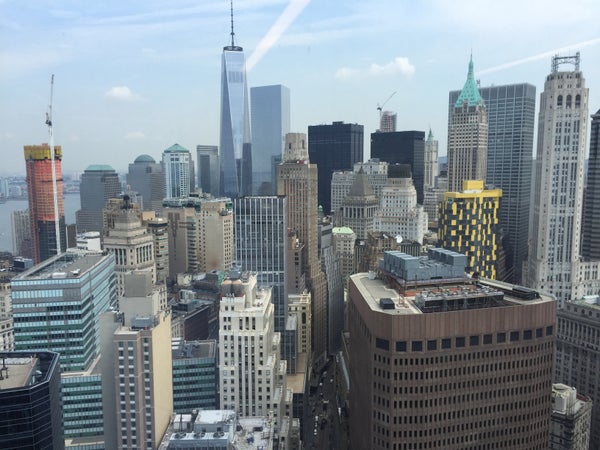This article was published in Scientific American’s former blog network and reflects the views of the author, not necessarily those of Scientific American
We have a grand view of the bustling New York Harbor from our new offices high above Battery Park. It took us 170 years to get here, and we have made a few stops along the way.
Our first office was described as “a little ‘7 by 9’ office” that Scientific American founder Rufus Porter rented on 11 Spruce Street, in a building that appears on insurance maps but for which no photograph seems to exist. This building was probably five floors of light manufacturing, including, unfortunately, “the cellar, in which a large quantity of liquors were stored, and in which a man was employed with fire and kettles (a circumstance of which we were not aware) in the manufacture of spirituous bitters” [November 13, 1845]. On October 20 the whole building went up in flames. There is a four-week gap between issue number 8, on October 16 and issue number 9, on November 13, so I leave it up to the more nit-picky of you to determine if we have really been continuously published since August 28, 1845 or since November 13, 1845.
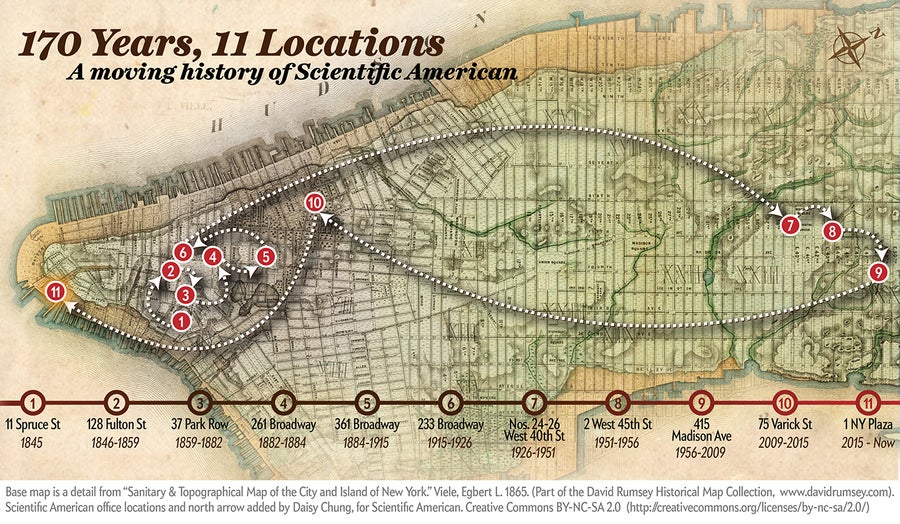
Scientific American's Manhattan office locations over time, by Daisy Chung. (Base map courtesy of the David Rumsey Map Collection).
On supporting science journalism
If you're enjoying this article, consider supporting our award-winning journalism by subscribing. By purchasing a subscription you are helping to ensure the future of impactful stories about the discoveries and ideas shaping our world today.
Porter rented new office space at 128 Fulton Street, on the southwest corner of Fulton and Nassau in the building occupied by the Sun newspaper (the November 13, 1845 issue is being listed as published at “Sun Buildings”).
In 1859 publication moved to 37 Park Row, at Beekman Street, sharing a large building with other printers and publishers. For over 20 years the publication grew and thrived in this building. But it, too, went up in flames—famously and rapidly—on January 31, 1882. There was no break in publication. The resilience and responsiveness was and is impressive: “Two hours later we had leased the elegant series of offices in the large building of the United States Life Insurance Company, 261 Broadway, corner of Warren, across the Park, opposite our former quarters; and before nightfall loads of desks, chairs, drawing tables, books, and instruments had been delivered, our helpers were at work, and the hum of the SCIENTIFIC AMERICAN beehive had again begun” [February 11, 1882].
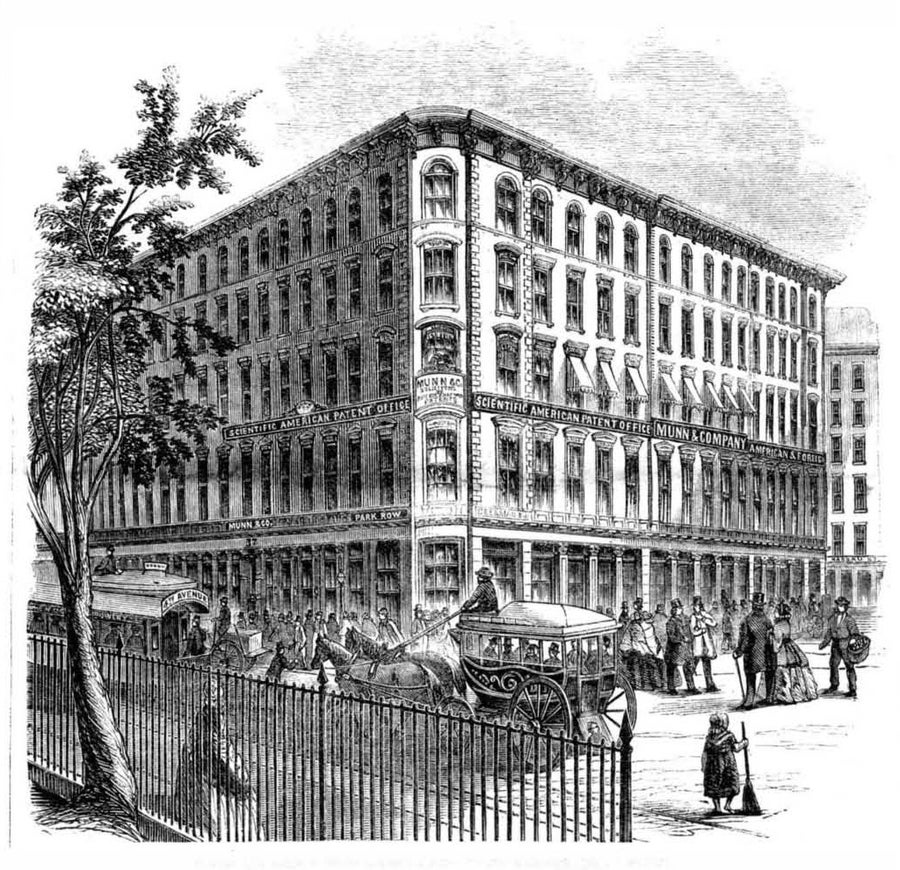
View of the Park Row office, from Scientific American, April 16, 1859
In 1884 there was a more peaceful move to a more suitable location on 361 Broadway, corner of Franklin Street, where the magazine remained until 1915.
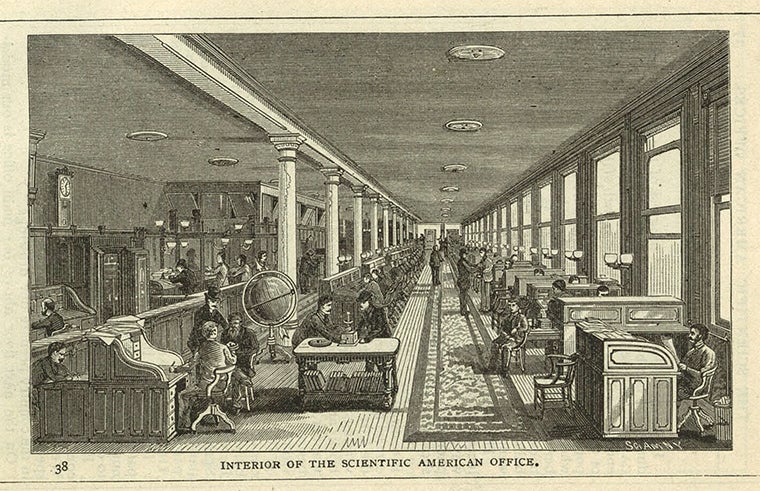
361 Broadway, from The Scientific American Reference Book, 1887
The move in 1915 to 233 Broadway was anything but humdrum. That address is otherwise famously known as the Woolworth Building, one of the earliest and still one of the tallest skyscrapers in New York City, which had just been finished in 1913.
In 1924 Munn and Co. purchased land and commissioned a suitable edifice for it, and in 1926 the magazine moved into the “Scientific American Building” at 24-26 West 40th Street. The building still stands, and it still has our name on it. Sadly, the fortunes of the magazine declined over the next couple of decades. The building itself was sold in 1943 for $425,000, and in 1948 the magazine was spun off from Munn & Company. In 1951 the new, ascendant, Scientific American moved out of its building to 2 West 45th Street.
In 1956 we moved into our longest-inhabited space, a brand new building completed the previous year at 415 Madison Avenue. Occupying various floors in that location over the years, we stayed until 2009.
After various aspects of our publication business were folded in with those of Nature Publishing Group, Scientific American headed downtown again, to 75 Varick Street, at Canal Street in SoHo, an old manufacturing building enjoying the early revitalization of the area.
In July 2015, the magazine, now part of Springer Nature, moved even farther downtown, to the water’s edge overlooking New York Harbor. The best part of our space here is that when we take a break from our labors and look up, we have a sweeping view of the progress of history and the energy of human creativity, some of which, such as the Statue of Liberty, we documented as it was being built, and all of which I would like to think that we have been contributing to in some small way for the past 170 years.
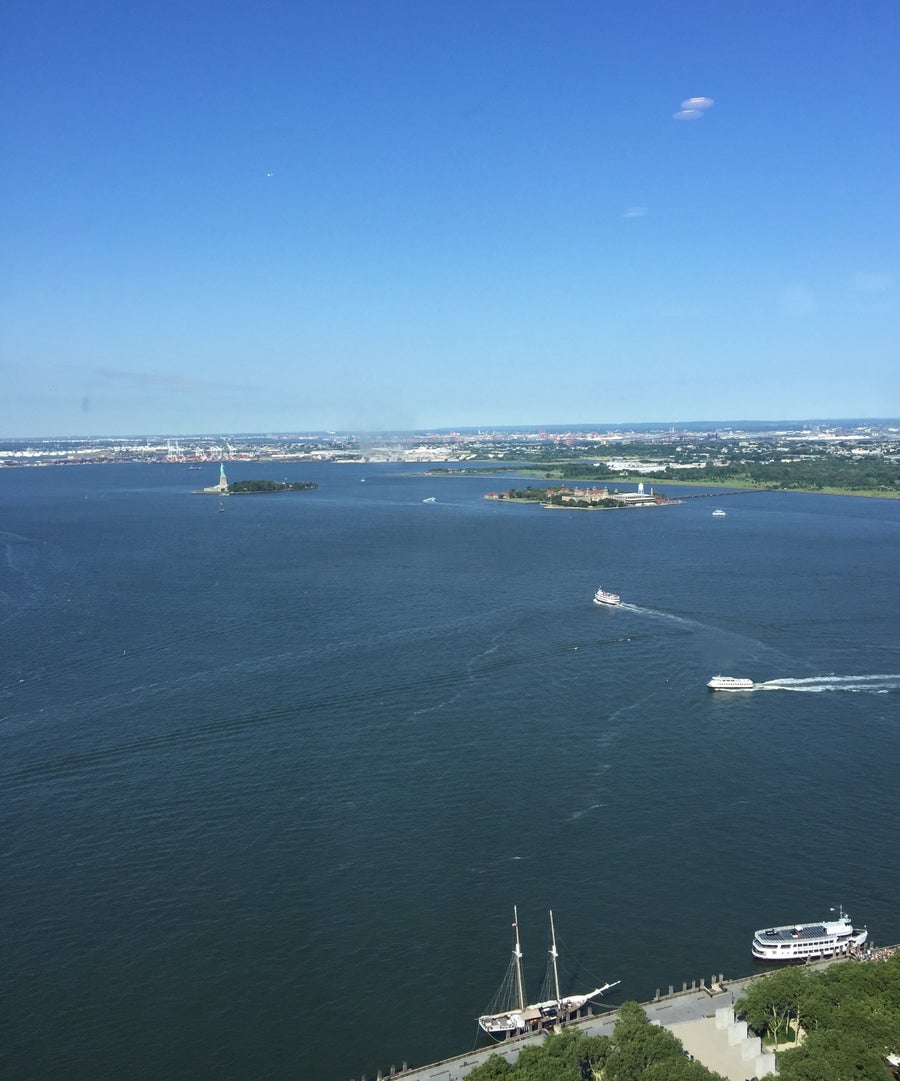
The view from 1 New York Plaza, photograph by Daisy Chung
